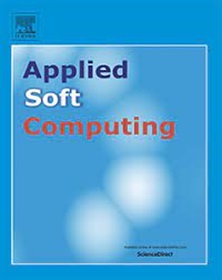基于llm的隐写术中隐蔽通信的多准则语言优化
IF 6.6
1区 计算机科学
Q1 COMPUTER SCIENCE, ARTIFICIAL INTELLIGENCE
引用次数: 0
摘要
本文提出了一种利用大型语言模型(llm)通过安全隐写进行秘密通信的新框架。我们的方法利用多标准语言优化将秘密信息直接编码为自动回归生成文本的风格特征。这一策略平衡了嵌入能力与自然性和连贯性。秘密消息被划分为固定大小的块。每个块通过满射线性映射嵌入到二进制风格特征向量中,从而引入冗余。这种冗余可以使用历史感知的成本函数来选择风格向量,以最大限度地减少突然的过渡,并保持句子的流畅性。候选句子是通过提示具有上下文和风格约束的llm生成的。拒绝采样保证了准确的特征匹配和高语言质量。在多个llm、不同文本上下文和参数设置中进行的实验评估表明,每个令牌的有效嵌入能力高达0.30位,同时保持强大的语言自然性,通过困惑度、词汇多样性、可读性和语言可接受性指标进行验证。重要的是,在理想条件下,解码可以零错误地恢复完整的秘密。这证实了该方法的可靠性。目前的工作重点是嵌入效率和不可感知性。对主动文本更改和正式不可检测性评估的鲁棒性仍然是未来研究的开放挑战。提出的多准则语言优化框架通过协调安全信息嵌入与流畅的类人语言生成,为高级隐蔽通信提供了一条有前途的途径。本文章由计算机程序翻译,如有差异,请以英文原文为准。
Multi-criteria linguistic optimization for covert communication in secure LLM-based steganography
This paper presents a novel framework for covert communication through secure steganography using large language models (LLMs). Our approach leverages multi-criteria linguistic optimization to encode secret information directly into stylistic features of auto-regressively generated text. This strategy balances embedding capacity with naturalness and coherence. The secret message is partitioned into fixed-size blocks. Each block is embedded into binary stylistic feature vectors via a surjective linear mapping, which introduces redundancy. This redundancy enables the use of a history-aware cost function that selects stylistic vectors to minimize abrupt transitions and preserve fluency across sentences. Candidate sentences are generated by prompting LLMs with contextual and stylistic constraints. Rejection sampling then ensures exact feature matching and high linguistic quality. Experimental evaluation in multiple LLMs, diverse text contexts, and parameter settings demonstrates effective embedding capacities of up to 0.30 bits per token while maintaining strong linguistic naturalness, validated through perplexity, lexical diversity, readability, and a linguistic acceptability metric. Importantly, decoding recovers the full secret with zero error under ideal conditions. This confirms the reliability of the method. The current work focuses on embedding efficiency and imperceptibility. Robustness against active text alterations and formal undetectability assessments remain open challenges for future research. The proposed multi-criteria linguistic optimization framework offers a promising avenue for advanced covert communication by harmonizing secure information embedding with fluent, human-like language generation.
求助全文
通过发布文献求助,成功后即可免费获取论文全文。
去求助
来源期刊

Applied Soft Computing
工程技术-计算机:跨学科应用
CiteScore
15.80
自引率
6.90%
发文量
874
审稿时长
10.9 months
期刊介绍:
Applied Soft Computing is an international journal promoting an integrated view of soft computing to solve real life problems.The focus is to publish the highest quality research in application and convergence of the areas of Fuzzy Logic, Neural Networks, Evolutionary Computing, Rough Sets and other similar techniques to address real world complexities.
Applied Soft Computing is a rolling publication: articles are published as soon as the editor-in-chief has accepted them. Therefore, the web site will continuously be updated with new articles and the publication time will be short.
 求助内容:
求助内容: 应助结果提醒方式:
应助结果提醒方式:


